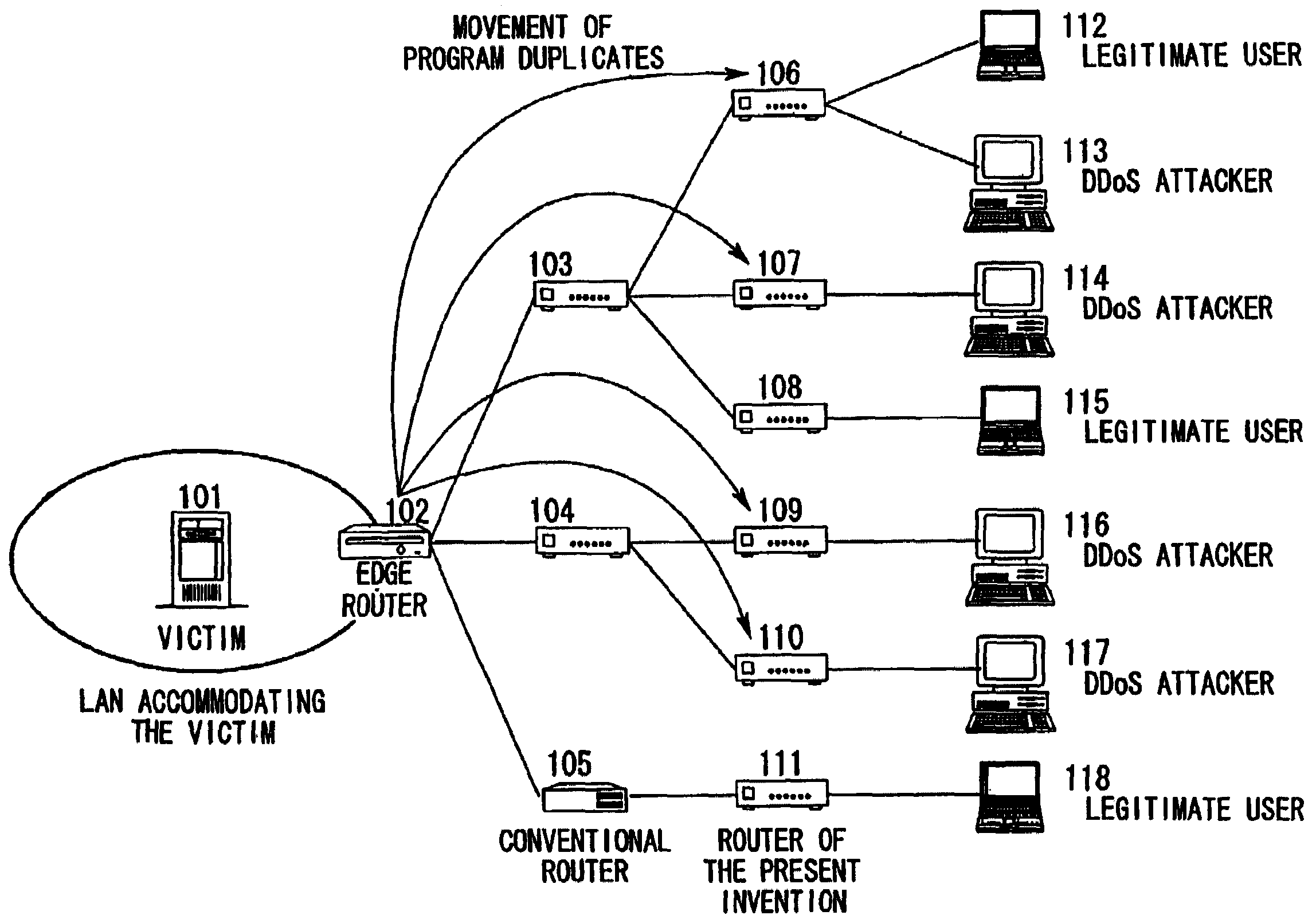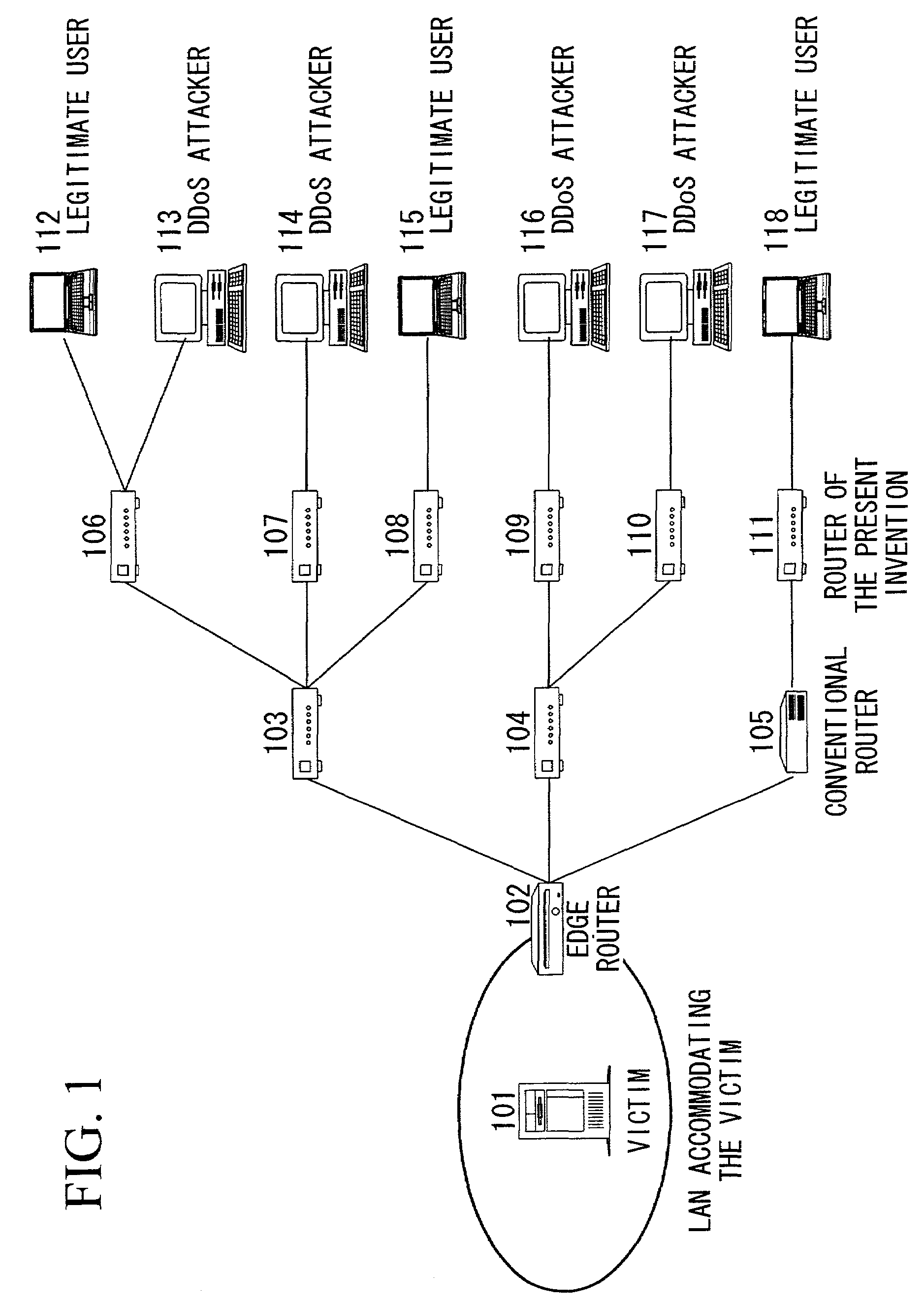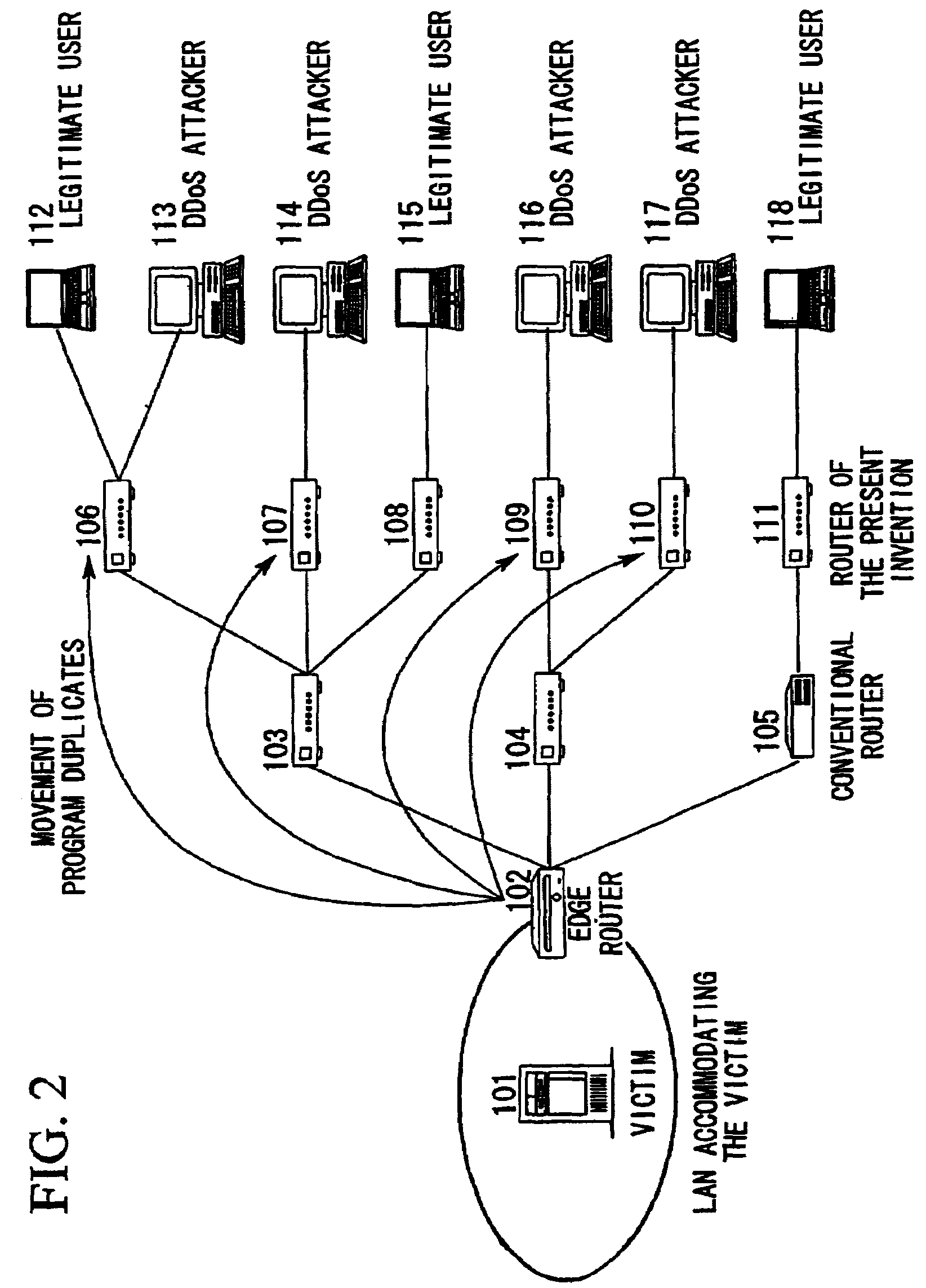Distributed denial of service attack defense method and device
- Summary
- Abstract
- Description
- Claims
- Application Information
AI Technical Summary
Benefits of technology
Problems solved by technology
Method used
Image
Examples
first embodiment
(First Embodiment)
[0042]A detailed description is given below using the drawings of the embodiments of the present invention. FIG. 1 is a structural view of a network to which the present invention can be applied. The hosts 113, 114, 116, and 117 operated by DDoS attackers send attacking packets to the server 101 of the victim. The local area network (LAN) in which the server 101 of the victim is accommodated is connected to an external network by an edge router (communication device) 102. The mobile packet filtering function of the present invention is installed in this edge router 102. The routers (communication device) 103, 104, 106, 107, 108, 109, 110, and 111 are also routers to which the technology of the present invention can be applied. These routers are provided with the function of being able to receive programs sent via the network and execute these programs. Note that the router 105 is a conventional router in which the technology of the present invention has not been ap...
second embodiment
(Second Embodiment)
[0096]Next, a description will be given of the second embodiment of the present invention. In the above described first embodiment, the attack source retrieval module moves while holding all the attack information, however, in the second embodiment, the attack source retrieval module moves while holding the information of only one attack source.
[0097]FIGS. 13 and 14 are flow charts showing the procedure of the mobile packet filtering process according to the present embodiment. The description below is given in accordance with these flow charts.
[0098]The process from steps S201 to S203 in FIG. 13 is the same as the process from step S001 to S003 shown in FIG. 3. The process from step S204 to S206 and the process of step S207 are also the same as the process from step S004 to S006 and the process of step S007 shown in FIG. 3 respectively.
[0099]The process from step S208 to S209 in FIG. 14 is the same as the process of step S008 to S009 shown in FIG. 4. In step S210...
third embodiment
(Third Embodiment)
[0101]Next a description will be given of the third embodiment of the present invention. In the first and second embodiments, the attack source retrieval module and the protection module are separate modules, however, in the third embodiment, a module (referred to below for reasons of convenience as “protection module B”) is used in which the functions of the attack source retrieval module and the functions of the protection module have been integrated.
[0102]FIGS. 15 and 16 are flow charts showing the procedure for the mobile packet filtering process according to the present embodiment. The description below is given in accordance with these flow charts.
[0103]The process from steps S301 to S303 in FIG. 15 is the same as the process from step S001 to S003 shown in FIG. 3. The process from step S304 to S306 and the process of step S307 are also the same as the process from step S004 to S006 and the process of step S007 shown in FIG. 3 respectively.
[0104]The process f...
PUM
 Login to View More
Login to View More Abstract
Description
Claims
Application Information
 Login to View More
Login to View More - R&D
- Intellectual Property
- Life Sciences
- Materials
- Tech Scout
- Unparalleled Data Quality
- Higher Quality Content
- 60% Fewer Hallucinations
Browse by: Latest US Patents, China's latest patents, Technical Efficacy Thesaurus, Application Domain, Technology Topic, Popular Technical Reports.
© 2025 PatSnap. All rights reserved.Legal|Privacy policy|Modern Slavery Act Transparency Statement|Sitemap|About US| Contact US: help@patsnap.com



